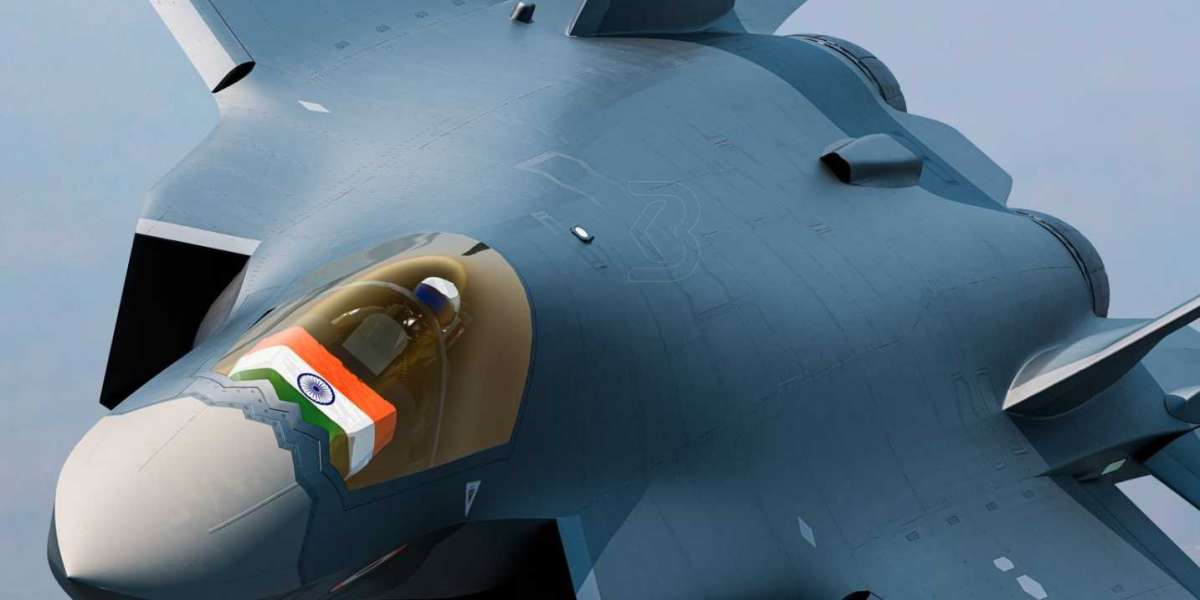The AMCA Fighter Jet (AMCA) is India’s ambitious next-generation fighter jet project. Designed to place India among the select nations with indigenous fifth-generation stealth aircraft, AMCA represents a leap in aerospace technology and defense capability. Spearheaded by the Aeronautical Development Agency (ADA) and produced in collaboration with Hindustan Aeronautics Limited (HAL), the AMCA program aims to ensure self-reliance in defense while addressing future combat needs.
As of 2025, the project is advancing steadily, with prototypes under development and full-scale production on the horizon.
Background and Genesis of the AMCA Program
India has long relied on foreign fighter jets like the Sukhoi Su-30MKI, Mirage-2000, and Rafale. While indigenous programs such as the Light Combat Aircraft (LCA) Tejas marked progress, India lacked a stealth-capable, next-gen fighter.
The AMCA project was conceived in the early 2010s as part of India’s Make in India defense strategy, aiming to reduce dependency on imports and enhance indigenous RD.
Design Philosophy and Features
Stealth Capabilities
- Radar-absorbing materials and reduced radar cross-section (RCS).
- Internal weapons bay to minimize detectability.
- Serrated edges and angular design for low observability.
Engine and Performance
- Initially powered by GE F414 engines, with future indigenous engines planned.
- Capability for supercruise (sustained supersonic flight without afterburners).
- Maximum speed estimated at Mach 2 with advanced maneuverability.
Weapons Systems
- Equipped with air-to-air and air-to-ground missiles.
- Laser-guided bombs, precision strike weapons, and anti-ship capabilities.
- Internal weapons bay plus external hardpoints for heavy payloads.
Avionics and Sensors
- Advanced Active Electronically Scanned Array (AESA) radar.
- Infrared search and track (IRST) system.
- Sensor fusion for real-time battlefield awareness.
Variants
- Mark 1: Fifth-generation stealth fighter.
- Mark 2: Sixth-generation technologies including optional manned-unmanned teaming.
Strategic Importance of the AMCA
Enhancing Air Superiority
The AMCA will complement India’s existing fleet of Su-30MKI, Rafale, and LCA Tejas, providing a stealth edge in modern warfare.
Indigenous Capability
By developing the AMCA domestically, India reduces dependence on foreign suppliers and strengthens its defense industry.
Deterrence Factor
In a region with advanced air forces like China’s and Pakistan’s, AMCA enhances India’s strategic deterrence.
Export Potential
If successful, the AMCA could become a competitive export product for friendly nations, boosting India’s defense diplomacy.
Challenges Facing the AMCA Program
- Technology Hurdles: Developing stealth materials, advanced engines, and sensor fusion systems is complex.
- Funding Constraints: High costs (estimated at billions of dollars) could delay timelines.
- Global Competition: Established fifth-gen jets like the F-35, Su-57, and J-20 already dominate the market.
- Dependence on Foreign Engines: Indigenous engine development remains a critical gap.
Progress as of 2025
- Design Finalization: AMCA’s final design has been approved.
- Prototype Development: First prototype expected to roll out soon, with test flights planned within the next few years.
- Collaborations: Partnerships with international aerospace firms for subsystems and materials.
- Production Plans: Full-scale production targeted for the early 2030s.
Global Context
Only a handful of countries—the United States, Russia, and China—currently operate fifth-generation stealth fighters. With AMCA, India aims to join this exclusive club, signaling its rise as a technological and defense power.
The project also strengthens India’s strategic autonomy, reducing reliance on imports in a geopolitically turbulent world.
Future Prospects
Looking ahead, the AMCA program could pave the way for:
- Sixth-Generation Features: Directed energy weapons, AI-driven combat systems, and drone integration.
- Defense Exports: Expanding India’s role as a global defense supplier.
- Technological Spin-offs: Advances in materials science, avionics, and propulsion benefiting other industries.
Conclusion
The AMCA fighter jet is not just another aircraft—it is a symbol of India’s technological ambition, strategic foresight, and defense self-reliance. As of 2025, while challenges remain, the project is moving forward with strong government support and industry collaboration.
If successfully developed and inducted, AMCA will transform India’s airpower capabilities, secure its skies, and reinforce its position as a rising global defense power.








